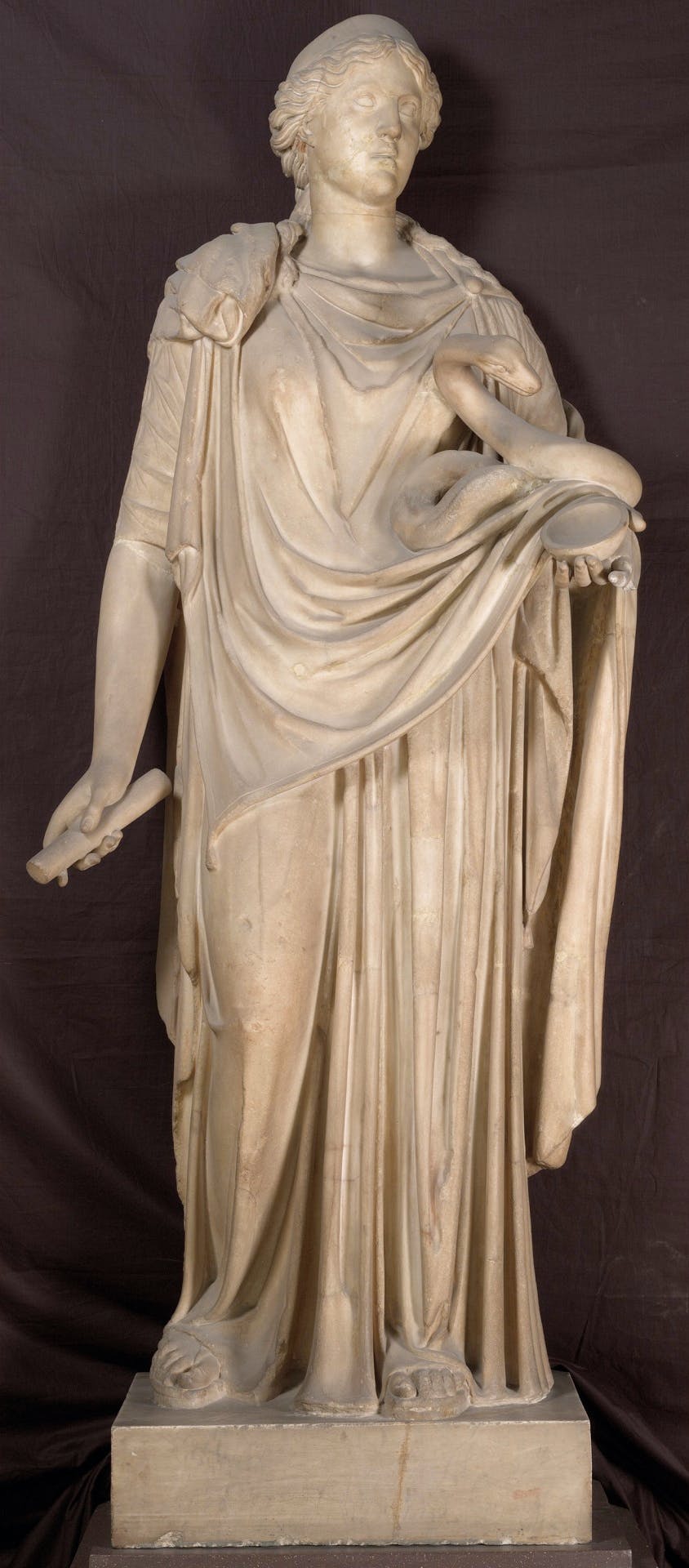Hygieia
Roman art
Documented in Rome in the mid-16th century, the work was bought by Ferdinando de' Medici in 1584, and it has been in the Gallery since the end of the 18th century. The neck and arms of the statue, with their attributes, are from restoration, as is the (modern) skull cap. The work depicts a young woman dressed in a long chiton, over which she wears a Doric peplos, fixed on her shoulders, which falls to her chest with a conspicuous fold. In the left hand is a drinking pot (patera), while on the same arm rests a snake. The statue represents Hygieia, daughter of the god Aesculapius and Epione and protector of health and hygiene. There are no known originals with which this statue can be identified: for this reason, it is preferred to define it as a "variant" of the Roman period, reworked around 150 A.D. According to Amelung, the artist was inspired by the Eirene and Ploutos by Kephisodotos (ca. 375 b.C.), father of the famous Praxiteles, but also by other models from the late classical and Hellenistic periods.
A. Romualdi (a cura di), Studi e restauri. I marmi antichi della Galleria degli Uffizi, II, Firenze, Polistampa, 2007 (con contributi di F. Guidetti, L’Igea degli Uffizi, pp. 88-115; L. Pierelli, G. Tonini, Il restauro, pp. 117-119) e bibliografia precedente.
